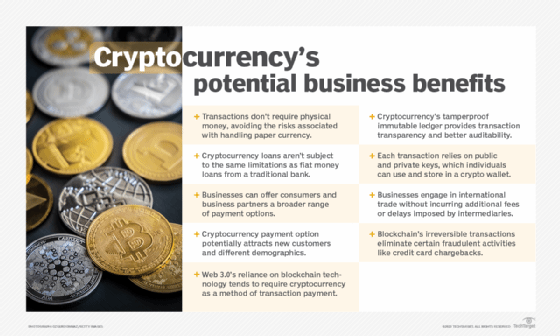The Full Overview to Order Cryptocurrencies in 2024: Tips and Ideal Practices
The Full Overview to Order Cryptocurrencies in 2024: Tips and Ideal Practices
Blog Article
The Future of Cryptocurrencies: Patterns to Enjoy in the Coming Years
The introduction of Central Bank Digital Currencies (CBDCs) stands to redefine the assimilation of digital assets within traditional monetary systems, while enhanced regulative analysis might form the functional landscape for cryptocurrencies. In addition, the advancement of decentralized finance (DeFi) and the growing significance of non-fungible tokens (NFTs) guarantee to alter assumptions of ownership and valuation in an electronic economic climate.
Rise of Central Financial Institution Digital Currencies
The emergence of Reserve bank Digital Currencies (CBDCs) stands for a significant shift in the economic landscape as governments check out electronic alternatives to typical fiat cash. These state-backed electronic money aim to enhance the performance of settlement systems, promote financial addition, and offer a safe and secure choice to exclusive cryptocurrencies. Unlike decentralized electronic currencies, CBDCs operate under the auspices of main financial institutions, ensuring regulatory oversight and security.
Numerous countries are proactively piloting or investigating CBDCs, with notable examples including China's electronic yuan and the European Reserve bank's digital euro initiative. These efforts highlight a growing acknowledgment of the potential advantages of digital money, such as faster deal speeds and decreased costs connected with cross-border payments. CBDCs might offer as a tool to deal with illicit tasks by supplying better transparency in purchases.
As the fostering of CBDCs proceeds, they may improve consumer habits and influence global financial characteristics. However, the change to an electronic currency framework offers difficulties, consisting of technological facilities, cybersecurity problems, and public trust. The rise of CBDCs indicates a zero hour that could redefine the role of money in a progressively digital economic situation, requiring close monitoring by industry stakeholders and policymakers alike.
Raised Regulatory Scrutiny

Countries worldwide are taking diverse methods, from straight-out restrictions to governing sandboxes that permit innovation while making sure conformity. The European Union, for instance, is relocating in the direction of comprehensive regulation with the Markets in copyright-Assets Policy (MiCA), aimed at developing a unified approach across participant states. In the USA, agencies like the SEC and CFTC are increasingly energetic in providing guidelines and enforcement actions.
Companies operating in the copyright area may face stricter conformity requirements, which can lead to increased functional expenses. Eventually, the equilibrium in between development and law will form the future of cryptocurrencies.
Evolution of DeFi Operatings Systems
Decentralized Finance (DeFi) platforms have actually undertaken significant makeover since their creation, improving the standard monetary landscape - order cryptocurrencies. At first, these platforms mainly concentrated on easy features such as lending and borrowing, facilitated by clever agreements on blockchain networks. Nonetheless, the advancement of DeFi has expanded to incorporate a vast variety of financial solutions, consisting of derivatives trading, yield farming, and automated market-making.
One of one of the most significant developments is the emergence of Layer 2 remedies, which improve scalability and lower deal costs, making DeFi extra easily accessible to a broader target market. Additionally, cross-chain interoperability has actually come to be a critical focus, permitting individuals to move possessions seamlessly across different blockchain networks. This advancement promotes better liquidity and individual involvement.
Moreover, the assimilation of advanced administration models has actually encouraged neighborhoods to join decision-making processes, advertising sustainability and technology within the community. As DeFi remains to mature, we can expect more enhancements in individual experience via boosted interfaces and safety and security procedures, click over here now attending to concerns that have actually previously prevented mainstream fostering. In general, the trajectory of DeFi platforms points toward a more comprehensive and reliable financial future, providing choices to conventional banking systems.
Combination of NFTs in Financing
Among the quick evolution of the monetary landscape, the combination of Non-Fungible Symbols (NFTs) has actually become a transformative pressure. Traditionally associated with digital art and collectibles, NFTs are currently discovering applications in numerous economic fields, presenting cutting-edge ways to represent ownership and value.
One considerable area of combination is in genuine estate, where NFTs can enhance residential or commercial property deals. By tokenizing genuine estate possessions, purchasers can delight in fractional ownership, decreasing entry barriers and enhancing liquidity. order cryptocurrencies. Furthermore, NFTs can guarantee transparent and unalterable documents of possession, improving rely on realty negotiations
On the planet of financing, NFTs are also being made use of for decentralized money (DeFi) applications, making it possible for collateralization of possessions. By using NFTs as collateral, consumers can access loans while preserving possession of their digital assets. This capability improves the ease of access of monetary services and advertises a much more inclusive economic environment.
In addition, the assimilation of NFTs into traditional money might revolutionize the means intellectual residential property legal rights are managed, offering makers with brand-new profits streams through clever contracts. On the whole, the integration of NFTs in financing signifies a change in the direction of more cutting-edge, effective, and transparent monetary solutions, paving the means for future advancements.
Improvements in Blockchain Technology

One substantial click here now fad is the emergence of Layer 2 services, created to enhance scalability and purchase rates, therefore addressing the restrictions of main blockchain networks. These options allow much faster handling of purchases, lowering costs and boosting performance, which is essential for mass adoption.
Furthermore, interoperability between various blockchain networks is gaining grip. This growth allows smooth information exchange and asset transfers across diverse systems, advertising an extra linked and reliable community. Protocols that promote cross-chain communication are necessary for cultivating cooperation among decentralized applications (copyright) and enhancing customer experiences.
In addition, innovations in agreement mechanisms, such as proof-of-stake and delegated proof-of-stake, are adding to check it out more energy-efficient and secure blockchain procedures. These technologies not just deal with environmental problems however additionally boost network durability.
As blockchain technology proceeds to develop, its integration right into different industries, including financing, supply chain, and health care, will redefine typical systems, paving the way for a decentralized future.
Verdict
The development of Central Financial institution Digital Currencies will certainly enhance the combination of electronic assets into conventional monetary systems. In addition, the continuous development of decentralized money systems and blockchain technology, together with the combination of non-fungible symbols, will redefine possession and economic purchases, fostering enhanced adoption and advancement within the field.
Report this page